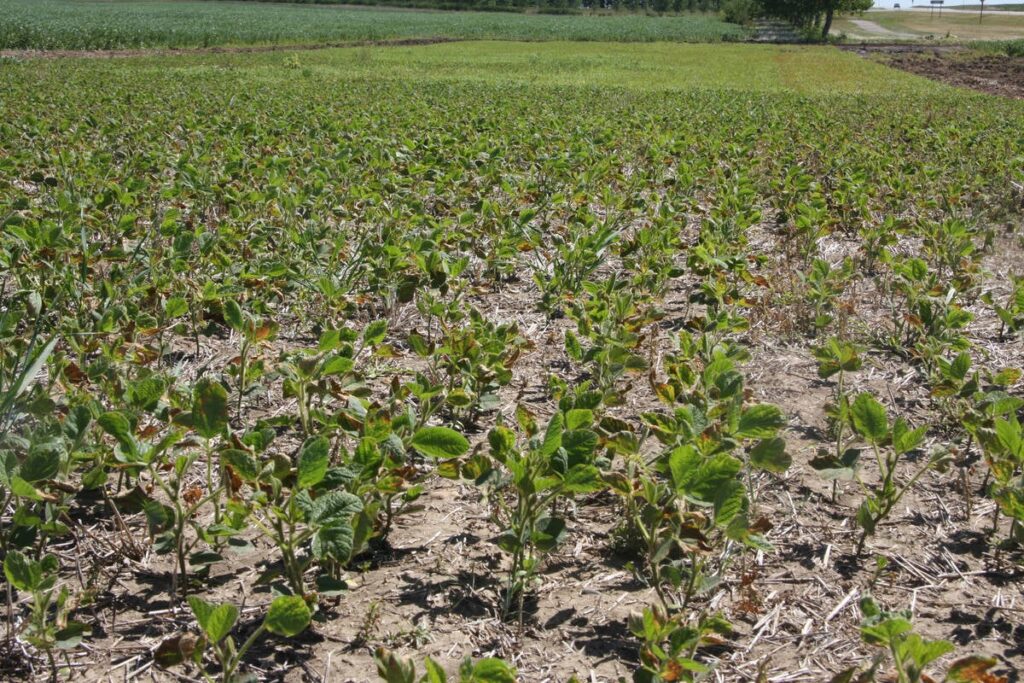Chinese tariffs could mess with U.S. soybean plans

SASKATOON — Soybeans could be headed for a wild ride this growing season, says an analyst.
Rich Nelson, chief strategist at Allendale Inc., said the outlook ranges from “terribly bearish” to mildly bullish depending on tariffs and weather.
Follow all our tariff coverage here
Read Also


‘Don’t equate us with Toronto news, culture’ Ontario farmers tell western colleagues
When it comes to the 2025 federal election, what do farmers from different regions of Canada have in common? Glacier FarmMedia reporters and contributors from Ontario, Quebec, Alberta and Manitoba asked farmers about their election priorities, how…
The way that situation pans out will have a big impact on Canadian canola prices, since the two oilseeds are closely linked.
Nelson believes China’s 125 per cent import tariff could cost the U.S. between 300 and 500 million bushels of soybean demand.
However, that could be eased by weather concerns, despite recent rainfall events.
“Public and private forecasters are still calling for a dry mid-summer in the U.S.,” he said.
Dry conditions could shave 200 million bu. off U.S. soybean production and 100 million bu. off 2025-26 ending stocks.
That would still be a bearish outlook if the tariffs remain in place. However, it is an entirely different story if the U.S. and China manage to settle their differences.
“If we do get these trade issues fixed and we see some summer (yield) hit, the soybean balance sheet could be quite tight,” said Nelson.
That is especially true if China’s tariffs drastically alter spring seeding plans in the U.S., as Safras & Mercado, a South American agricultural research and analysis firm, is forecasting.
The U.S. Department of Agriculture is already counting on a big swing in that direction.
It believes farmers will plant 95.3 million acres of corn, up five per cent over last year and 83.5 million acres of soybeans, down four percent.
However, that forecast was released on March 31, before China announced its 125 per cent retaliatory tariff.
Safras noted in a recent article published on its website that China slapped a 25 per cent tariff on U.S. soybeans during the 2018 trade war between the two countries. However, that happened in July, long after seeding took place.
The tariff resulted in a 12-million-acre reduction in soybean planting the following year, falling to 77 million acres from 89 million.
But this time around, the tariff has been implemented prior to seeding, so there is time for farmers to react and adjust their 2025 plans.
China accounts for nearly half of U.S. soybean exports. Safras believes total U.S. exports could fall to less than 30 million tonnes from a usual volume of around 50 million tonnes with China out of the market.
Safras wonders if the “great fear” about losing the Chinese market will push U.S. soybean planting below 80 million acres this year.
“We believe so due to the general panic that has taken hold in the U.S. Midwest given the memory of soybeans at US$8 per bushel in 2018,” stated the firm.
Nelson isn’t so sure that China’s tariffs will impact U.S. seeded acres in 2025.
“This has already been a long-decided issue for the U.S. farmer,” he said.
“I don’t personally know of any producers who are further changing their planting intentions.”
He thinks farmers’ plans are “set in stone” and won’t deviate much from the USDA’s March 31 estimate.
Safras believes some U.S. farmers may just opt to increase the amount of land in fallow.
Nelson thinks that is unlikely.
“Farmers are not yet cutting back, but they should be,” he said.
“They haven’t lost enough money yet.”
Growers are coming off a year where they lost money, but prior to that they were generating profits of $50 to $150 per acre for three consecutive years.
“We need a little more financial pain before they truly cut acres,” said Nelson.
The USDA’s final acreage report is scheduled to be published June 30.
Source: www.producer.com


